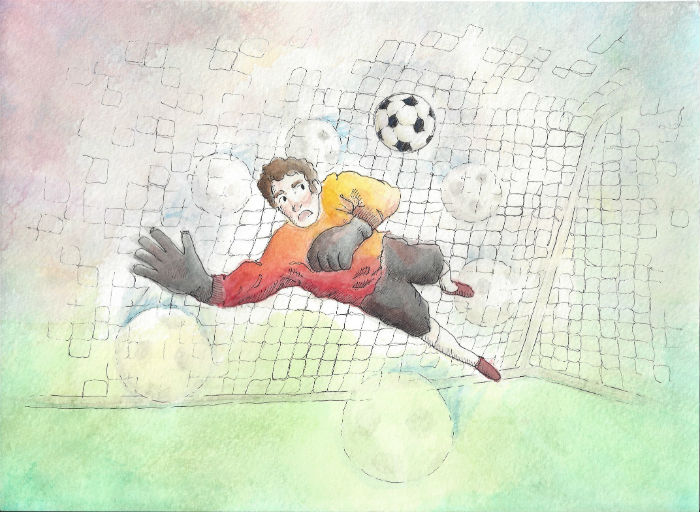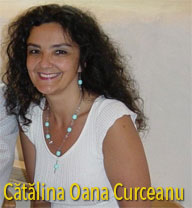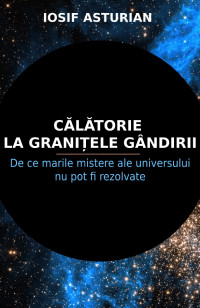
Sistemele microscopice pot fi pregătite în configuraţii cuantice, fără un corespondent clasic. Până în prezent nu există nicio dovadă privind comportamentul ne-clasic al lumii macroscopice. De curând am primit finanţare pentru derularea unui proiect pentru determinarea limitelor mecanicii cuantice din perspectiva scării până la care se poate identifica un comportament cuantic.
Vă ataşez mai jos un comunicat de presă în limba engleză cu detalii privind proiectul de cercetare. Pe această pagină puteţi găsi detalii despre proiectul menţionat.
Microscopic systems can be prepared in quantum configurations with no classical counterpart.
so far we have no evidence of non-classical behavior of the macroscopic world. Why is it so? How is quantumness lost as we abandon the microscopic domain? These questions, which remain to date largely unanswered, address interesting and challenging goals of modern research in physics, and serve the overarching goal of this project.
The INFN, Laboratori Nazionali di Frascati, leads the quest for understanding the foundations of physics
The stadium is fully silent in anticipation: the goalkeeper is ready to dive and catch the ball that the opponent player is about kicking from the penalty spot. The referee whistles, the player hits the ball straight to the goalkeeper, who smiles for the easy catch, but something weird happens: the ball passes both to his right AND to his left and ends in the net accompanied by the roar of the supporters.
Impossible? Not if the ball is a small, microscopic particle such as an atom or an electron. In fact, the microscopic world eludes the laws of physics established by Newton, which successfully describe the vast majority of the phenomena and events that occur in our daily life, and obey the counter-intuitive, seemingly magic rules of quantum mechanics.
Quantum mechanics is a mathematical framework established at the beginning of the last Century that provides, to date, the most accurate understanding of the results of experiments conducted on physical systems as small as single atoms, very small molecules, and very faint light. The success of quantum mechanics is striking and has driven considerable scientific endeavours aimed at investigating the minuscule effects that are at the basis of very important processes of vast applications, from nuclear magnetic resonance to the transistor, from the laser to the most accurate GPS.
Besides being undeniably successful, quantum mechanics is equally undeniably ‘weird’. It allows as perfectly legitimate physical processes that put one of the microscopic systems mentioned above in two different, perfectly distinguishable configurations at the same time! That is, our microscopic foot-ball could pass on the left of the goalkeeper and on his right at the same time. The law that makes such a case possible is the so-called ‘quantum superposition principle’ (QSP), arguably the most fundamental statement in quantum physics.
The validity of QSP at the microscopic level has been confirmed by an enormous amount of very accurate experimental data: atoms, electrons, and photons (the quantum mechanical building blocks of light) have been prepared in states that superimpose fully distinct physical configurations, such as being ‘here’ and ‘there’, at the same time.
However, is this valid only when we consider such elementary quantum systems? Everyday experience seems to suggest so: the foot-ball always slips either on the left or on the right of the keeper (but sometimes he catches it): never in both ways simultaneously. The macroscopic world that is before our very own eyes seems to elude the richness of quantum superposition states. On the other hand, real foot-balls are made of atoms, which are quantum. So why don’t we see them behaving quantum mechanically? It could simply be that such states are fragile, or in general hard to see but there nevertheless for us to explore them.
Whether we can observe quantum superpositions of macroscopic objects is arguably ‘the’ open question in quantum physics. An answer in the positive will boost the quest for the use of the weirdness of quantum mechanics in a much larger set of physical systems, not restricted to the microscopic world. The relevance of this difficult question cannot be remarked enough.
Now, a team of scientists including the group of the LNF-INFN led by Dr. Catalina Oana Curceanu have joined in consortium to address such a fundamental quest from an innovative standpoint, supported by a € 4.4M grant awarded by the European Commission (EC). The Collaborative Project “TEQ” (Testing the large-scale limit of quantum mechanics) puts together 8 leading European research group and company MSquared to explore quantum effects at the large scale under the support of the EC Horizon2020 research framework programme. The project is one of the only 26 funded proposals out of 374 submitted to the latest call for Future and Emerging Technologies projects.
The team will levitate a small particle within a well-controlled environment, with low temperature and low vibrations. In such an environment an indirect test of the QSP can be performed by analysing carefully the noise that affects the centre of mass motion of the trapped particle. The measured noise will then be compared to theoretical predictions from different models - some of which assume a breakdown of QSP.
The ambition of the project is to establish the ultimate bounds to the validity of the quantum framework, if any. “This is the question to address”, says Dr. Catalina Oana Curceanu who will lead the LNF-INFN team in TEQ, “because it has been discussed for ages in the foundations of physics community and we now have the experimental tools to get a definite answer. So we really can make a big step forward here, both in fundamental science and for the future quantum technologies, from ground to space.”
The award of such a competitive grant reinforces the relevance of fundamental investigations on quantum theory to underpin the current developments in the area of quantum technologies.
TEQ Consortium
University of Trieste (PI) – Italy
Aarhus Universitet – Denmark
Istituto Nazionale di Fisica Nucleare – Italy
Oesterreischische Akademie Der Wissenschaften – Austria
The Queen’s University Belfast – United Kingdom
Technische Universiteit Delft – The Netherlands
University College London – United Kingdom
University of Southampton – United Kingdom
M-Squared Lasers Limited – United Kingdom
Photo Credit: Giorgia Perich - Liceo Scientifico "G. Galilei" in Trieste (Italy).
The picture is part of a collaborative project between the University of Trieste and the Liceo Scientifico "G. Galilei" in Trieste.

